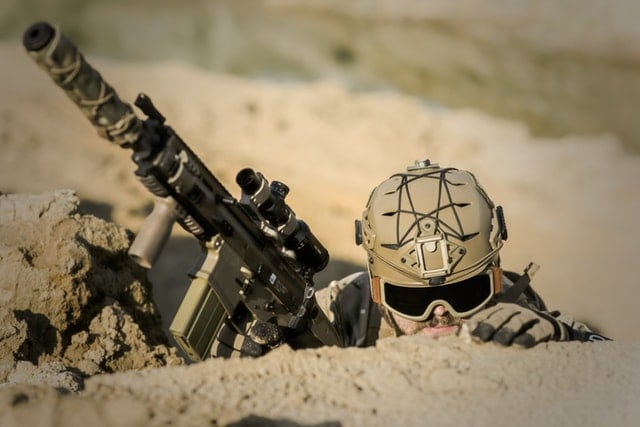With ISIS Making a Comeback, ALPR Adoption is More Important than Ever

By John Chigos, CEO, PlateSmart Technologies
Well, that didn’t take long.
I never expected that the death of ISIS leader Abu Bakr al-Baghdadi in October 2019 would spell the end of the terrorist organization. But I also didn’t expect ISIS to bounce back as quickly as U.S. defense officials are now claiming. According to the Defense Intelligence Agency, ISIS’s command structure and clandestine networks are alive and well, positioning the terrorist organization for a comeback.
Add to this the fact that ISIS hasn’t lost its passionate followers. While there isn’t a precise count of them, we do know that there are thousands of active ISIS followers around the world and that there are a number of them are already in the U.S.
For us in the West, that means the war on terror is far from over and we must keep our collective guards up. While we’ve been fortunate to have had relatively few terrorist events occur on American soil since 9/11, more attacks will occur, and they will be more severe.
It’s not a question of if, but of when.
One way to deal with this ongoing menace is by continuing to invest in anti-terror technology. And one of the most effective tools we have at our disposal is automatic license plate recognition (ALPR). Why? Because while ALPR is an excellent investigative tool, it is also a proactive technology that can prevent terrorist attacks by providing law enforcement with actionable intelligence via a key item in the terrorist’s toolbox: a motor vehicle.
Terrorists use motor vehicles in many ways. They can be used as weapons — an approach better known as a vehicle-ramming attack. An example of this is when Mohamed Lahouaiej-Bouhlel drove a cargo truck into crowded Bastille Day celebrations in the French city of Nice on July 14, 2016, killing 84 people. Motor vehicles can also be used to deliver a bomb. For that, one has only to remember Timothy McVeigh, his rented Ryder truck and the Oklahoma City bombing.
However, when planning an attack, terrorists often use motor vehicles to case potential targets, either by driving to them and parking for an extended period or by frequently driving around a target without stopping, which is also called “circling behavior.” These activities actually expose terrorists to detection and give license plate recognition the opportunity to identify them before they can strike.
How? ALPR data is time- and date-stamped, which allows authorities to search for vehicles making frequent visits to possible targets, from airports to arenas to city centers. Results can also be filtered by camera so that law enforcement can look for vehicles captured on cameras near or around potential targets.
But the real power of license plate recognition comes from its ability to amplify existing law enforcement intelligence.
If law enforcement has vehicle data for individuals on terrorist watch lists, for instance, they can monitor the comings and goings of those vehicles and find patterns that might indicate an attack in the works.
Furthermore, since ISIS and other terrorist organizations use the Internet, the dark web, and social media to convey information and encouragement to both soldiers and lone wolves alike, law enforcement agencies monitoring those channels can integrate that intelligence with the latest LPR technology and be even more effective in preventing attacks. For instance, the AI and deep learning capabilities inherent in PlateSmart’s ALPR technology, for example, allow authorities to search not only for the plate and jurisdiction but also the vehicle make, color, type, and orientation. Combining such technology and the analytics it provides with the intelligence to which law enforcement agencies have access means having a real-time tool that can alert authorities to unusual events involving a vehicle that might otherwise go unnoticed.
In short, integrating license plate recognition with other law enforcement intelligence is significantly more effective than using either approach alone. The whole is greater than the sum of the parts.
The threat of terrorism both domestic and foreign remains very real, despite any small victories we may be able to periodically enjoy. Terrorist attacks have already altered our collective consciousness and have resulted in the loss of lives and property. I consider it likely that such attacks will become more severe in the future, possibly rising to the devastating effect on the human psyche we experienced on 9/11.
ISIS, al-Qaeda, Hamas, Hezbollah, and many others have shown both willingness and skill when it comes to employing technology to achieve their nefarious ends. We must be equally willing to use technology to stop them.
ALPR technology is one of the few available that can provide proactive intelligence that can prevent an attack from occurring if used properly, rather than other technologies that only serve to assist law enforcement after an event has occurred. And the time to implement it more broadly is right now.
